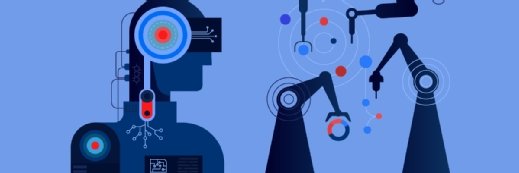
Getty Images
Machine Learning Tools Predict Impact of Quarantine on COVID-19
Researchers are leveraging machine learning models to understand how quarantine measures will impact the spread of COVID-19.
In the global effort to slow the spread of COVID-19, many countries have adopted social distancing and quarantine measures to mitigate the impact of the pandemic. Now, researchers are using machine learning tools to quantify the effects of these measures in specific parts of the world.
For more coronavirus updates, visit our resource page, updated twice daily by Xtelligent Healthcare Media.
A team from MIT has developed a machine learning model that leverages coronavirus data and a neural network to determine the effectiveness of quarantine measures and predict the spread of the virus.
Most tools used to predict the spread of a disease follow the SEIR model, which groups people as susceptible, exposed, infected, or recovered. MIT researchers enhanced this model by training a neural network to capture the number of infected individuals who are under quarantine and no longer spreading the infection to others.
“Our model is the first which uses data from the coronavirus itself and integrates two fields: machine learning and standard epidemiology,” said Raj Dandekar, a PhD candidate studying civil and environmental engineering.
The model shows that in places like South Korea, where there was immediate government intervention in adopting strict quarantine measures, the COVID-19 spread plateaued faster.
In areas where government interventions happened slower – like Italy and the US – the model shows that the effective reproduction number of COVID-19 remains greater than one, meaning the virus has continued to spread exponentially.
Using the machine learning algorithm, researchers found that with the current quarantine measures in place, the plateau for Italy and the US would arrive somewhere between April 15-20. The model also suggests that the infection count will reach 600,000 in the US before the rate of infection starts to stagnate.
“Our model shows that quarantine restrictions are successful in getting the effective reproduction number from larger than one to smaller than one. That corresponds to the point where we can flatten the curve and start seeing fewer infections,” said George Barbastathis, professor of mechanical engineering.
The research team plans to share the model with other experts to help inform COVID-19 quarantine measures that can help slow the spread of infection.
“This is a really crucial moment of time. If we relax quarantine measures, it could lead to disaster,” said Barbastathis.
At Rensselaer Polytechnic Institute (RPI), researchers are also using machine learning to analyze the effects of social distancing, though on a more granular level.
Using county data from the New York State Department of Health and Mental Hygiene, RPI researcher Malik Magdon-Ismail has developed machine learning models that can predict local elements of the pandemic.
“There are no simple, robust, general tools that, for example, officials in Albany could use to make projections,” said Magdon-Ismail, a professor of computer science and expert in machine learning, data mining, and pattern recognition.
“These models show that the projections vary enormously from one city to another. This knowledge could relieve some of the uncertainty that is around in developing policy.”
Magdon-Ismail developed a model for New York’s Capital Region, which incorporates data from Albany, Rensselaer, Saratoga, and Schenectady counties up to April 10. Using a total at-risk population of 855,000, the model estimated that daily confirmed infections will peak at 1,490 on June 8 with 50 percent of people staying at home. In this case, the number infections would total 58,000.
With 75 percent of people staying home, daily confirmed infections will peak at 750 on May 28. The number of infections would total 29,000.
Using machine learning to model smaller cities is challenging because few data points are available and updated less frequently than the nation as a whole. To overcome this issue, Magdon-Ismail focused on using simple models that incorporate situations beyond that of the mathematical ideal.
“The machine gives you the model that best fits the data, but it turns out the best is usually a very fragile principle. There are lots of different models, lots of different explanations that are essentially as good,” Magdon-Ismail said.
“To make the output robust, we consider the collection of models that have near-optimal levels of consistency with the data. I find a variety of models that fit the data, and then I use all of those models together to predict.”
In earlier research, Magdon-Ismail tested his approach on data from the very beginning of the pandemic in the US. Early data offered a look at what would happen if no measures were taken to slow the spread of the virus.
“Early data is captured in the analogy: if you want to learn about a lion, you don’t observe the lion in the zoo, you have to observe the lion on the savannah,” Madgon-Ismail said.
“And what that means is early dynamics of the pandemic. Nobody really knows what’s going on, nobody really knows whether it’s serious, so nobody’s really done anything. And that’s where you see how it will really behave.”






